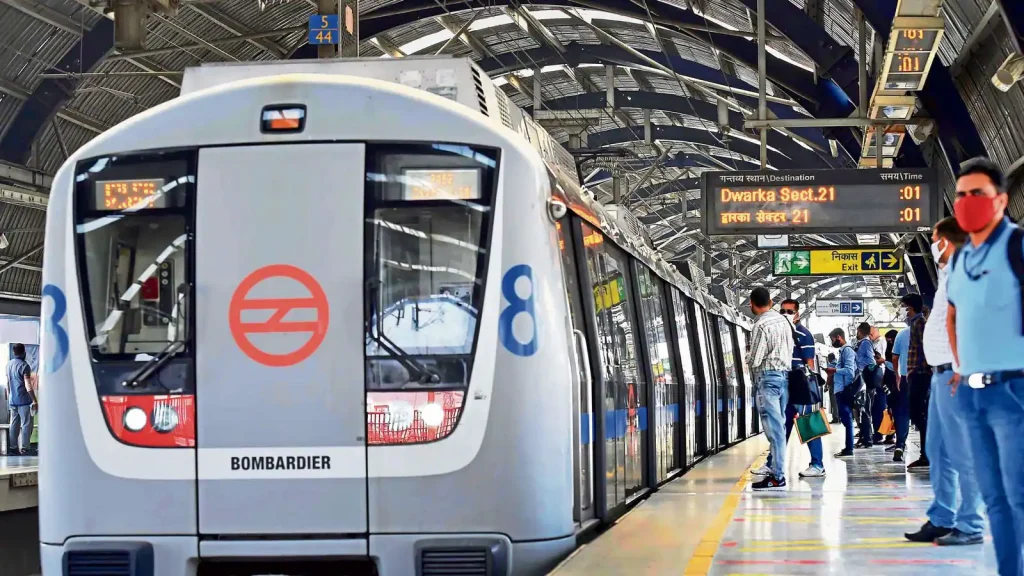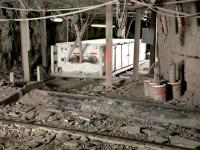The metro of Delhi, commonly known as the lifeline of the capital city of India, has changed and improved urban transportation since its establishment. Although many people, including students, know its effectiveness and convenience, several minor facts about an iconic metro system illuminate this great system’s journey. Here, we discuss the Top 10 Lesser-Known Facts about the Delhi Metro.

Here we are talking about the Top 10 Lesser-Known Facts about the Delhi Metro:
World’s First One of the Metro Projects to Get Carbon Credits.
Delhi Metro already had the signature of the first metro project in the world to gain carbon credits from the United Nations under the Clean Development Mechanism (CDM) framework. By utilizing energy-regulating technologies, regenerative braking systems, and photovoltaic power for station operations, Delhi Metro saved a ton of greenhouse gases and emphasized environmental sustainability.
Metro Network is Asia’s Largest and the World’s 9th Longest Metro.
The Delhi Metro measures over 390 km of track and has 285 metro stations across Delhi and neighboring towns, making it the largest network of this kind in the country and the 9th longest in the world. Its massive network links significant attendant, commercial, and industrial sites, and thousands of passengers commute to their next destination daily.
Indian Rapid Transit System Was Operating For Fully Modern Well Working.
Delhi Metro is India’s most advanced and automated metro system, creating a new metro train standard in India. Its modern infrastructure includes advanced signaling systems and automated fare collection systems, making travel safe, efficient, and comfortable for passengers.
Architectural Marvels Underground
Founded in the late 2000s, Delhi Metro’s swanky and modern-looking stations have become a familiar sight for most commuters, but what lies underneath the surface of these stations is still largely unknown. The topic of stations like Central Secretariat and Chawri Bazar is reflected in some of India’s most colorful paintings and arts that showcase the scope of India’s heritage and history.
Lifeline During Emergencies
Many are grateful for Delhi Metro’s service, which has proven itself an invaluable lifeline during natural and other calamities, offering much-needed help in disaster situations. When severe floods hit the city in 2010, Delhi Metro demonstrated its ability to draw away residents who were stranded or transport humanitarian assistance to those affected areas, evidencing its resilience and relevance in times of trouble.
Driverless Train Operations
To counter this, the Delhi Metro has launched a driverless train operation on the Magenta Line (Line 8) and the Pink Line (Line 7), a technological breakthrough. Such automated trains employ recently engineered technologies for signaling and communications that minimize the presence of the human element in the system’s management, hence improving efficiency, safety, and punctuality.
Complete Space for Disabled Persons Through Closed Walls
Delhi Metro advocates inclusivity and fairness for all commuters, including people with disabilities. It provides access at stations with ramps or elevators, tactile paths, or dedicated spaces for wheelchair users. As a result, everybody benefits from this kind of independence and comfort.
Green Initiatives/measures and Sustainability actions.
Delhi Metro, a single, aims to sustain growth by implementing green initiatives and sustainability measures. It has introduced rainwater harvesting systems, solar power generation, energy conservation in terms of lighting, and eco-friendly station design, all of which save the environment and reduce carbon emissions.
Dedicated Metro Museum

Delhi Metro boasts a metro museum located at Patel Chowk station, which describes the transition from the idea stage to its transformation into a modern urban transportation wonder. The museum offers visitors interactive exhibitions, old historical artifacts used by the railway station, models of trains and stations, and informative displays that give deep insight into the history and influence of Delhi Metro on the city.
Both environmentally friendly modes of promotion and the continuous development of ridesharing platforms will also be considered.
Even though the expansion does have its problems, the Delhi Metro continues to expand and develop at a very fast pace to service the city’s ever-increasing population. In the sequel to Phase III and new channels like Aerocity/Tughlakabad and Rithala/Narela line, the DM will widen the routes for convenient commutation on a sustainable basis for millions of users in coming years.
FAQs
How much is Delhi’s NSM (National Metro Service)?
The sphere of Delhi Metro covers 390 kilometers and has 285 stations from Delhi to adjoining cities, making it one of the largest metro spreads in the world.
What makes Delhi Metro stand out from various other metro systems?
The fully operational modern metro system in Delhi was the world’s first such project, and it is also the first project to earn carbon credits. This shows the system’s innovation and commitment to sustainability.
Does Delhi Metro have any prominent architectural sites along its stations?
As you can observe by visiting numerous Delhi Metro stations, minimalist designs transform into magnificent masterpieces. They intricately and majestically showcase our cultural heritage.
How does Delhi Mass Rail Transit deal with the accessibility problem for disabled persons?
Using Delhi Metro, the access barriers are removed at stations with ramps and elevators, tactile paths, and identification of the space reserved for wheelchair users, which benefits the passengers for all categories of society and is based on the independence and equality of all persons within the community.
What does Delhi Metro have to say about the so-called “green programs” undertaken?
Delhi Metro implements many sustainability measures, such as rainwater harvesting, solar power generation, energy-efficient lighting, and eco-friendly stations, which help decrease the burden on natural carbon emission sources.
Did Metro extend its services in community aid during the floods
Yes, the service of Delhi Metro was instrumental in lending a hand during crisis management, especially after natural disasters, by saving the lives of the trapped and ferrying the rescue materials to the affected areas.
How does the driverless train of Delhi Metro operate?
Delhi Metro initiated train operations without drivers on certain lines, and it used modern communication and signaling systems to operate a fleet with no driver inside the train, thus increasing its efficiency and safety.
What resources or sources do you need to understand better the narrative of the development of the Delhi Metro?
You can visit the Metro Museum located at the Patel Chowk station. It hosts a series of interactive exhibitions, historical artifacts, and sophisticated information about the Delhi Metro and its influence in the city.
What are Delhi Metro’s plans for expansion in the future?
Development continues for Delhi Metro, a mammoth yet realistic project for Phase IV. Other new corridors are already on the plans to further connectivity and accessibility to millions of commuters in Delhi and the entire NCR.
What sources can I access to stay abreast of developments in Delhi Metro regarding their services and expansions?
To stay current with Delhi Metro services, development projects, and announcements, visit its official website, follow its social media channels, and subscribe to newsletters offered by Delhi Metro authorities.
Conclusion
Along with the role of a passenger, Delhi Metro has a more significant meaning of versatility, ingenuity, and prowess. By highlighting its little-known and exciting details, the significance of this very metro system becomes evident as it shapes lives. It is a rural development beacon for sustainable urban development in India.



















